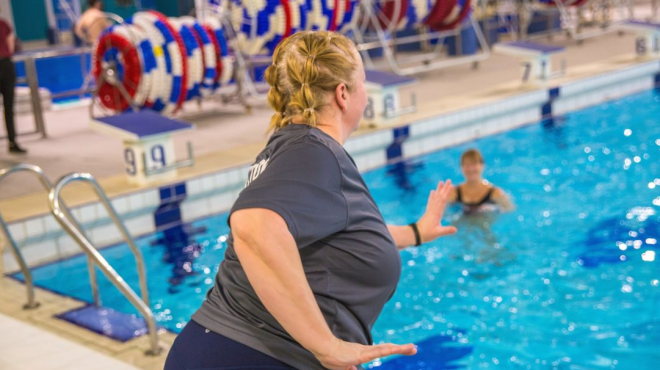Swim Schools – Do You Want To Build A Swimming Pool
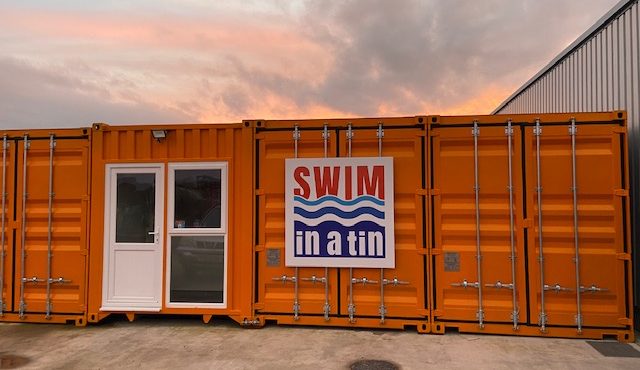
STA is seeing more and more swim schools start to build and have control over their own pools – but as we are starting to see in this blog series, they are not all being built in places you might think are obvious, and they are not all conventionally built pools.
This is the case for our next inspirational swim school – SWIM IN A TIN – and Jarred Hill, STA’s Marketing Co-Ordinator recently had a chat with the co-founders Nick Timms and Helen Barge about their swim school, which features an endless pool housed in ‘tin’ containers on a farm in Leamington Spa.
Before, we get into the details about the pool build, it is important to understand Nick and Helen’s backgrounds. What were your individual motivations for starting a private swim school?
Nick: My introduction to using an Endless Pool came from Helen purely by accident, I had entered for a “try a triathlon” event and as a self-taught swimmer, the swim was my biggest worry. It’s “only” 400 metres, but it was a lot further than I thought. So, at 50, I decided to learn how to swim properly.
However, getting the practice in was difficult, and trying to find a time at my local pool that would fit with work and family was almost impossible. When I started talking to friends and colleagues about this, I discovered that I wasn’t alone. So, when an opportunity to provide a private swimming experience for 5-year-olds and upwards with both instruction and “pay as you swim” options, I just had to explore the idea further and that’s where the story of Swim in a Tin began.
Helen: Simply, I had to overcome my fear of swimming. I remember so vividly at the age of 7 when I was asked as part of a school lesson to swim 20 meters. I started in the shallow end, and then 2 metres from the end as I frantically tried to doggy paddle across the diving pool, ran out of puff. I sank like a stone and had to be pulled out. I didn’t get back in again.
Roll forward 40 years to a family holiday. My eldest son glided up and down the pool doing a perfect front crawl and the younger one asking for the umpteenth time why I wouldn’t get into the pool, and I realised that I had to overcome this fear.
To add to my phobia of swimming I was incredibly self-conscious and hated the walk from the changing rooms to the pool. Thankfully, after much searching, I found a private pool with a great coach and have never looked back.
Swim in a Tin was formed for everyone who feels the same as I did. The changing rooms, the crowded pool, the confident swimmers splashing past, the noise of groups of people – the list is endless.
For any swim school, deciding to build a swimming pool is a huge decision and commitment, but for Nick and Helen, who are business owners with no prior experience of swimming teaching or managing a pool this was a walk into the relative unknown – from a business viewpoint, why did you want to do it?
Nick: We both enjoyed our own swimming journeys but always felt that we could provide an improved customer experience in a private environment. Neither of us relished the experience of a public pool with either lane politics (which one to choose – fast, slow, or in the middle) or the perception of the ‘walk of shame’ from the changing rooms. Therefore, when we were presented with the opportunity to develop a small private swimming experience using an endless pool (approximately 14ft by 8ft by 3ft where you swim against a current … not Olympic size), we grasped it. The opportunity to make it a business came relatively quickly, and with Helen and I having a blend of project, finance, risk, compliance, operations, people management skills through our ‘day jobs’, we are very familiar with the challenges of setting up and running a small business. But admittedly, this one was far harder than perhaps we thought!
Helen: Also important to add is that we wanted a business that was all in our control – we had a very clear vision of the quality experience that we wanted to provide to all our customers. As owners of our own pool, we have complete autonomy over how that is achieved.
Where did the journey begin, and Why “A swimming pool in a container?”
Nick: We had already bought the endless pool which was (relatively) straightforward forward, and it had a lead time of 9-11 months when we purchased it in December 2020. The next part was finding the right location which proved to be far more difficult. Always challenging when you explain you would like a unit to house a pool weighing around 11.5 tonnes with provision for air management, an accessible toilet, 2 large changing rooms with private showers, a waiting room, a reception area with ample parking, and visitors up to 12 hours a day and the noise of laughter from children in the pool. A hard sell!
Luckily, we found ourselves talking to the amazing team at Squab Leamington and we grabbed the opportunity to tour some potential buildings. Then our hearts sank when they suggested using a container… or in our case 3 containers. My imagination conjured up a picture of a cold, rusty old container. It was hardly the tailored, friendly, and boutique experience we were hoping to create.
Fortunately, the reality couldn’t be more different and once we fully engaged with the possibilities, Swim in a Tin was born.
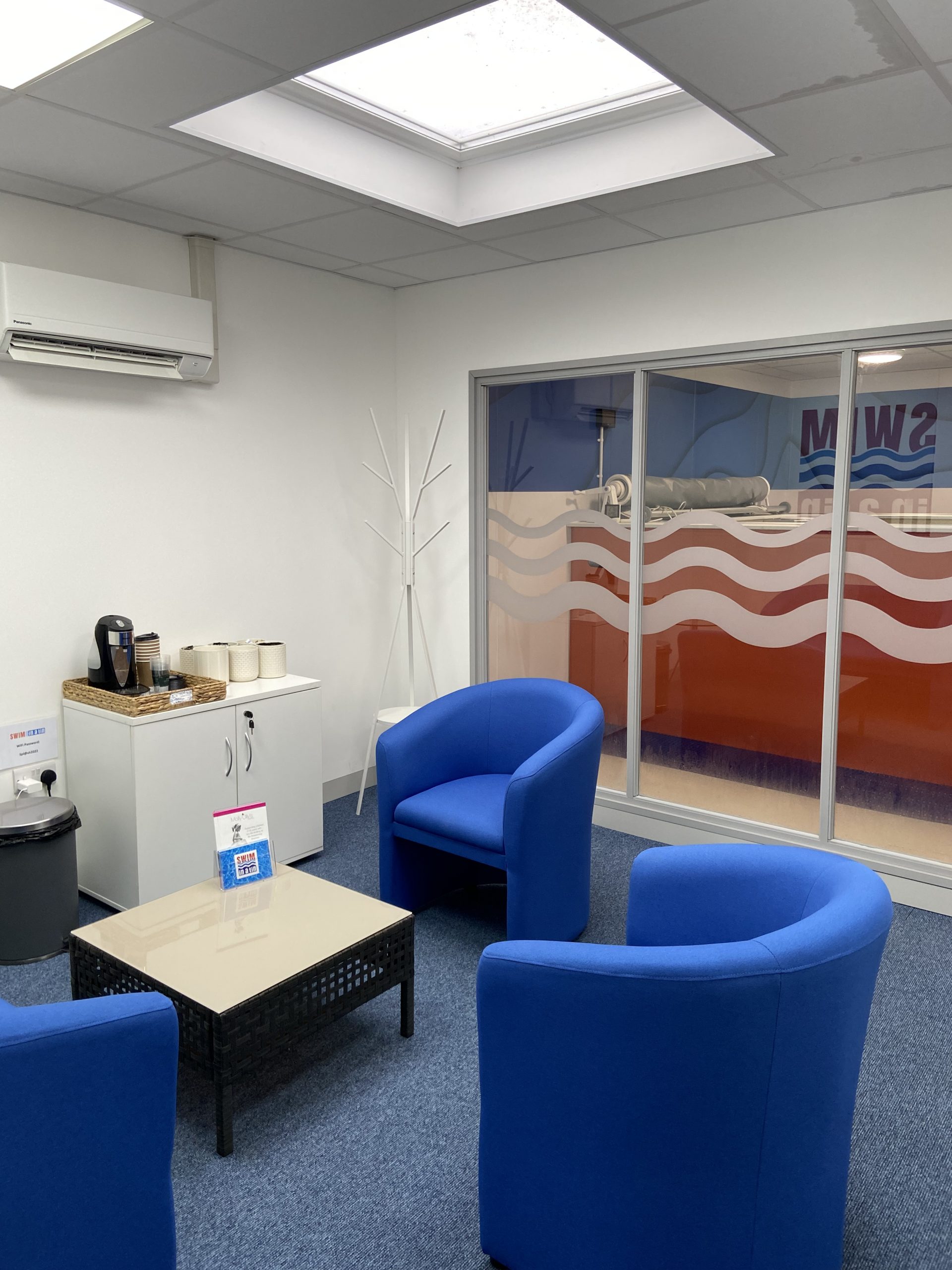
How did the relationship with Squab come about?
Nick: Squab are within Helen’s business network – they themselves are successful innovators, having diversified from traditional farming into a variety of other sectors, one of which is self-store and storage. Our timing was perfect as they had just begun to build a ‘container village’ and were keen to push the boundaries of how storage is traditionally used.
Tell us more about the containers themselves?
Nick: We originally were going to have 2 containers but when we finalised our design we went with 3 containers. This allowed us to maximise the experience and support, and create:
- A small reception
- A waiting area with a pool view
- Pool room with a shower and space for the instructor to walk around the pool
- An accessible toilet
- 2 large private changing rooms with private showers and space to change, even for parents and children.
The containers are flexible spaces, are fully configurable, have a small footprint, and therefore met our requirements – they just need power, water, and drainage. The key challenge and one that was a challenge over the first 2 years is that we do not believe anyone else has put a pool inside a shipping container. Like many innovative businesses, we learned through trial and error to deal with construction and operational challenges.
Where did you source the containers from?
Nick: The containers were sourced by Squab and are part of our agreement with them as our landlord. Containers are a cost-effective form of accommodation, but conversion to operate as a swimming business is not straightforward.
How did you transform the ‘tins’ into a full-functioning swim school business, with all the facilities / changing rooms, etc.?
Helen: We were lucky to work with several partners who shared our vision. The look and feel of the Tin internally and externally are perfectly in line with our vision, but in all honesty in reality is even better.
We worked hard on our design upfront and kept aligned to that scope. As with any project build, there were issues to overcome but having a proactive team of partners meant we could work together to resolve any issues.
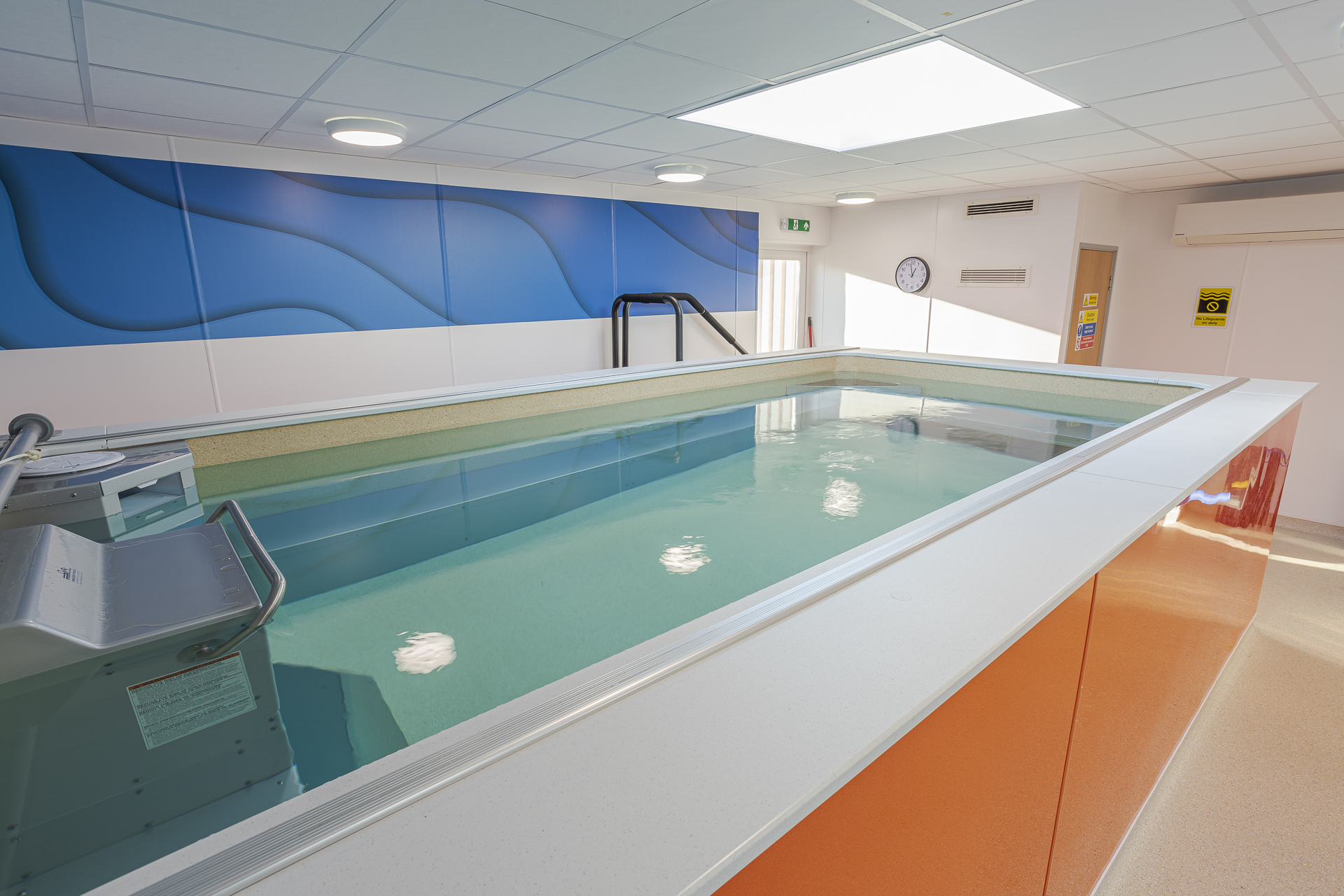
Moving on to the day-to-day management processes of running the pools – can you expand on using low chlorine and UV cleaning?
Nick: We wanted to make the environment as inviting as possible and keep Chlorine usage to a minimum, and we use an auto-dosing system along with UV cleaning to address this. This is supported by a small group of staff who are pool plant trained and look after our cleaning and backwash processes – plus we also have the backup of trusted experts should anything require more significant support, and have an annual full maintenance cycle.
Touching on the energy situation, have you had to make any changes over the last 1-2 years?
Nick: Energy costs are probably 300% or more higher than we projected when we started. As with all working prototypes, there are some design changes that we would make on future builds. As with all organisations that have a high dependency on efficient energy usage, we continue to look for improvements to reduce our electricity costs and limit our carbon footprint.
How did you find running a swim school for the first time?
Nick: Running any business is complex, putting a swimming pool into a shipping container brings its own challenges, from resolving design ‘features’ to helping customers understand that Swim in a Tin is different from their experience at their local swimming pool. Our combined business experience has been invaluable whether it be resolving problems, making improvements (such as the use of an online booking system), managing cash flow, and so on.
Helen: We are also very lucky to have a great team around us including experienced STA swimming teachers, a brilliant team of suppliers, and our landlord, Squab.
Nick: As with any role, there are days where you question the sanity of why you continue to push something as innovative (and frankly, completely bonkers) as Swim in a Tin. Our customer feedback makes it all worthwhile.
What did / do your swimming teachers think about the pools? Customers too?
Helen: Our swimming teachers love the flexibility of the pool to support the needs of all customers. Customer feedback is excellent – they love the quirkiness of the tin, the great facilities but of course, it’s the team that really brings everything to life and makes the ‘magic’ happen.
Who are your customers?
Helen: Our customer base is diverse ranging from top-level triathletes to those who are completely new to swimming. As swimming at the Tin is very private – no crowds of people, minimal noise, etc., we have several autistic and ADHD customers. For them, this is a safe, familiar place with friendly 1-2-1 teachers. For us as owners, we feel very privileged to be able to provide something that makes a real difference not just to them, but also their families. We’ve some really humbling stories from grandparents who can have fun in a pool with their grandchildren for the very first time.
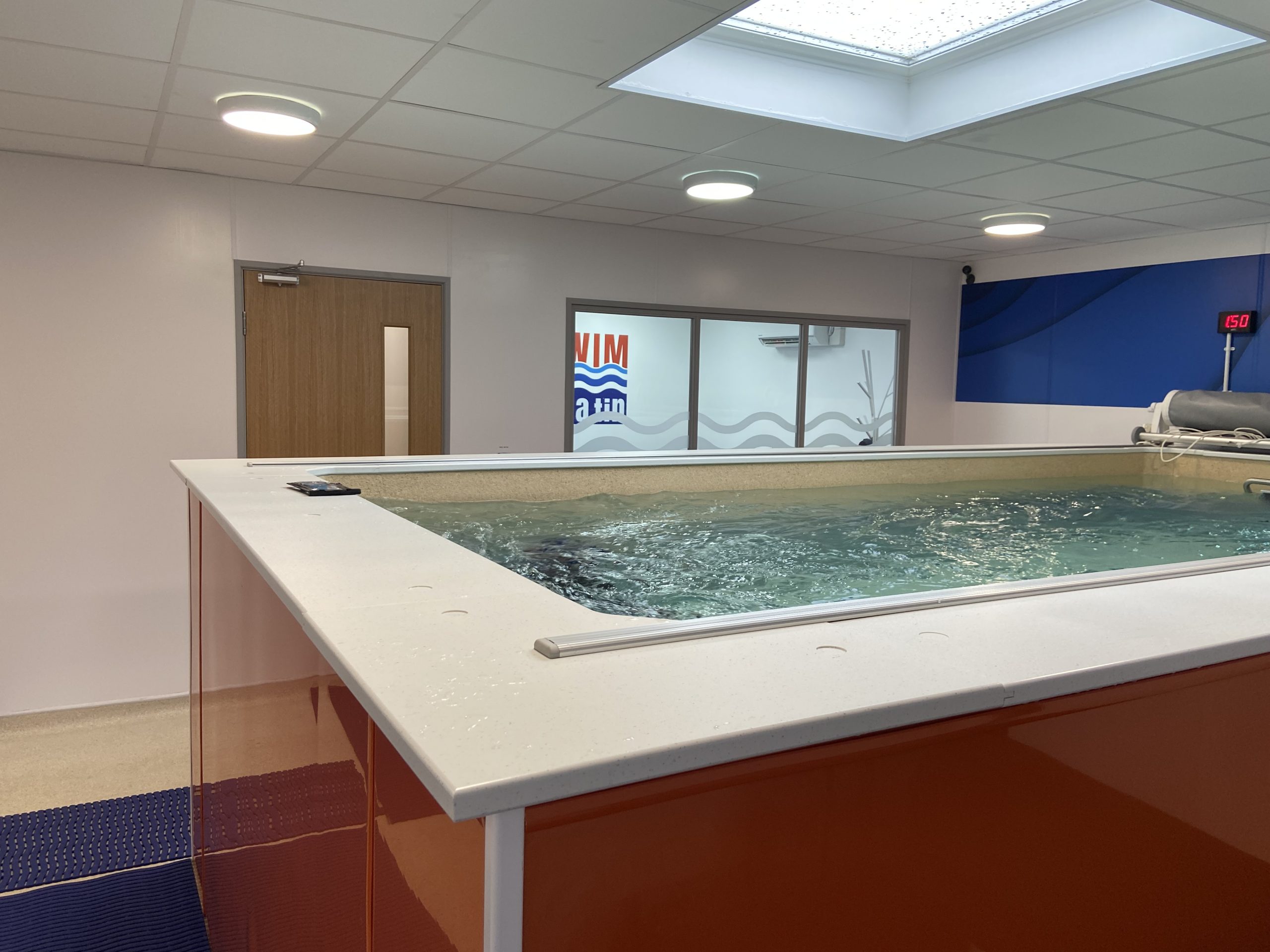
What activities do you do in the pool and for what age groups?
Nick: We partner with a local baby swim school for 0-4 provision and offer the following 7 days a week:
- 1-2-1 and 2-2-1 private lessons for 4 years and upwards – approx. 30-34 hours of teaching per week.
- Pay As You Swim – Pool Just for You sessions – private use.
- Family Splash sessions – 3 people in the pool – private use.
- Private hire by other instructors.
We are also exploring new services, including Hydrotherapy. Aquatic fitness activities and Aqua Natal are also feasible with appropriately qualified team members
Are there any key learnings from your experience that you’d like to share – bad and good?
Nick / Helen: Keep pushing, keep learning, keep looking at the big picture and not the lumps and bumps along the way, and …
- Find the right partners and trusted advisors who understand and share your vision.
- Accept that there will be setbacks – this is part and parcel of running a business.
- Don’t lose focus on your customers, their needs, and expectations (a given for any business).
- Try and have a location agreed before ordering the pool.
- Running a business in the evening and at weekends may not work for everyone!
Having gone through the journey, is there anything you might have done differently?
Nick: As with anything new, there are always things that you’d do slightly differently. We realised early on in our journey that Swim in a Tin Leamington was a prototype of what could be achieved. Consequently, we have an updated blueprint for Swim in a Tin 2.0, which reflects all our knowledge and experience gained to date. We have proved it is possible to put a swimming pool in a shipping container and run a successful business.
Would you recommend this to other swim schools, and if yes why?
Nick / Helen: Yes – the flexibility of the container means that the layout can be tailored to individual school needs and takes a relatively small footprint. It is your space and is available 24/7.
Plus, we have proudly fulfilled our primary passion, of providing a private, safe, welcoming swimming space that is inclusive and supportive for anyone looking to progress their swimming, wellbeing, and fitness journey.
Finally, based on your experience, please share anything else that might be of interest to other swim school owners thinking of taking the plunge!
Nick: Put together your model and make sure your numbers work, we cannot have foreseen the increase in energy costs but we could have been even more prudent with our forecasting.
Helen: if you thinking of taking the plunge, please contact us, we may be able to help, and save you money / time through our experiences – we may be able to package you up a pool too. We are starting to explore opportunities to franchise Swim in a Tin or supply Tin’s to client specifications. You never know you may see more Tin’s out there!
- Categories
- Building a Swimming Pool – Real-Life Stories



